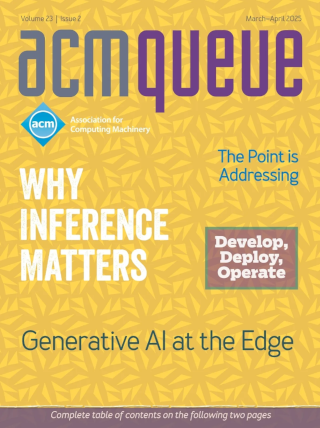
Probing Biomolecular Machines with Graphics Processors:
The evolution of GPU processors and programming tools is making advanced simulation and analysis techniques accessible to a growing community of biomedical scientists.
Computer simulation has become an integral part of the study of the structure and function of biological molecules. For years, parallel computers have been used to conduct these computationally demanding simulations and to analyze their results. These simulations function as a "computational microscope," allowing the scientist to observe details of molecular processes too small, fast, or delicate to capture with traditional instruments. Over time, commodity GPUs (graphics processing units) have evolved into massively parallel computing devices, and more recently it has become possible to program them in dialects of the popular C/C++ programming languages.
You Don’t Know Jack About Software Maintenance:
Long considered an afterthought, software maintenance is easiest and most effective when built into a system from the ground up.
Everyone knows maintenance is hard and boring, and avoids doing it. Besides, their pointy-haired bosses say things like: "No one needs to do maintenance - that’s a waste of time."
A Threat Analysis of RFID Passports:
Do RFID passports make us vulnerable to identity theft?
It’s a beautiful day when your plane touches down at the airport. After a long vacation, you feel rejuvenated, refreshed, and relaxed. When you get home, everything is how you left it. Everything, that is, but a pile of envelopes on the floor that jammed the door as you tried to swing it open. You notice a blinking light on your answering machine and realize you’ve missed dozens of messages. As you click on the machine and pick up the envelopes, you find that most of the messages and letters are from debt collectors. Most of the envelopes are stamped "urgent," and as you sift through the pile you can hear the messages from angry creditors demanding that you call them immediately. Reading the bank statements, you suddenly realize that someone has been charging large amounts of money to an account in your name from a credit card company you’ve never heard of. You’ve lost thousands of dollars, and suddenly you aren’t feeling quite so relaxed anymore.
Metamorphosis: the Coming Transformation of Translational Systems Biology:
In the future computers will mine patient data to deliver faster, cheaper healthcare, but how will we design them to give informative causal explanations? Ideas from philosophy, model checking, and statistical testing can pave the way for the needed translational systems biology.
One morning, as Gregorina Samsa was waking up from anxious dreams, she discovered that she had become afflicted with certain mysterious flu-like symptoms that appeared without any warning. Equally irritating, this capricious metamorphosis seemed impervious to a rational explanation in terms of causes and effects. "What’s happened to me?" she thought. Before seeing a doctor, she decided to find out more about what might ail her. She logged on to a Web site where she annotated a timeline with what she could remember. Since March, she’d had more headaches than usual, and then in April she had begun to experience more fatigue after exercise, and as of July she had also experienced occasional lapses in memory. "Why don’t I go back to sleep for a little while longer and forget all this foolishness," she thought. As she was about to abandon this errand, the system came back to life with a barrage of questions: Is she female? Had she experienced any significant stress in the past few months? Had she noticed any joint or muscle pain? It also obtained her permission to download her genomic profile.
Unifying Biological Image Formats with HDF5:
The biosciences need an image format capable of high performance and long-term maintenance. Is HDF5 the answer?
The biological sciences need a generic image format suitable for long-term storage and capable of handling very large images. Images convey profound ideas in biology, bridging across disciplines. Digital imagery began 50 years ago as an obscure technical phenomenon. Now it is an indispensable computational tool. It has produced a variety of incompatible image file formats, most of which are already obsolete.
Merge Early, Merge Often:
Integrating changes in branched development
When doing merged development, how often should you merge? It’s obvious that if I wait too long, then I spend days in merge hell, where nothing seems to work and where I wind up using the revert command more often than commit; but the whole point of branched development is to be able to protect the main branch of development from unstable changes. Is there a happy middle ground?



